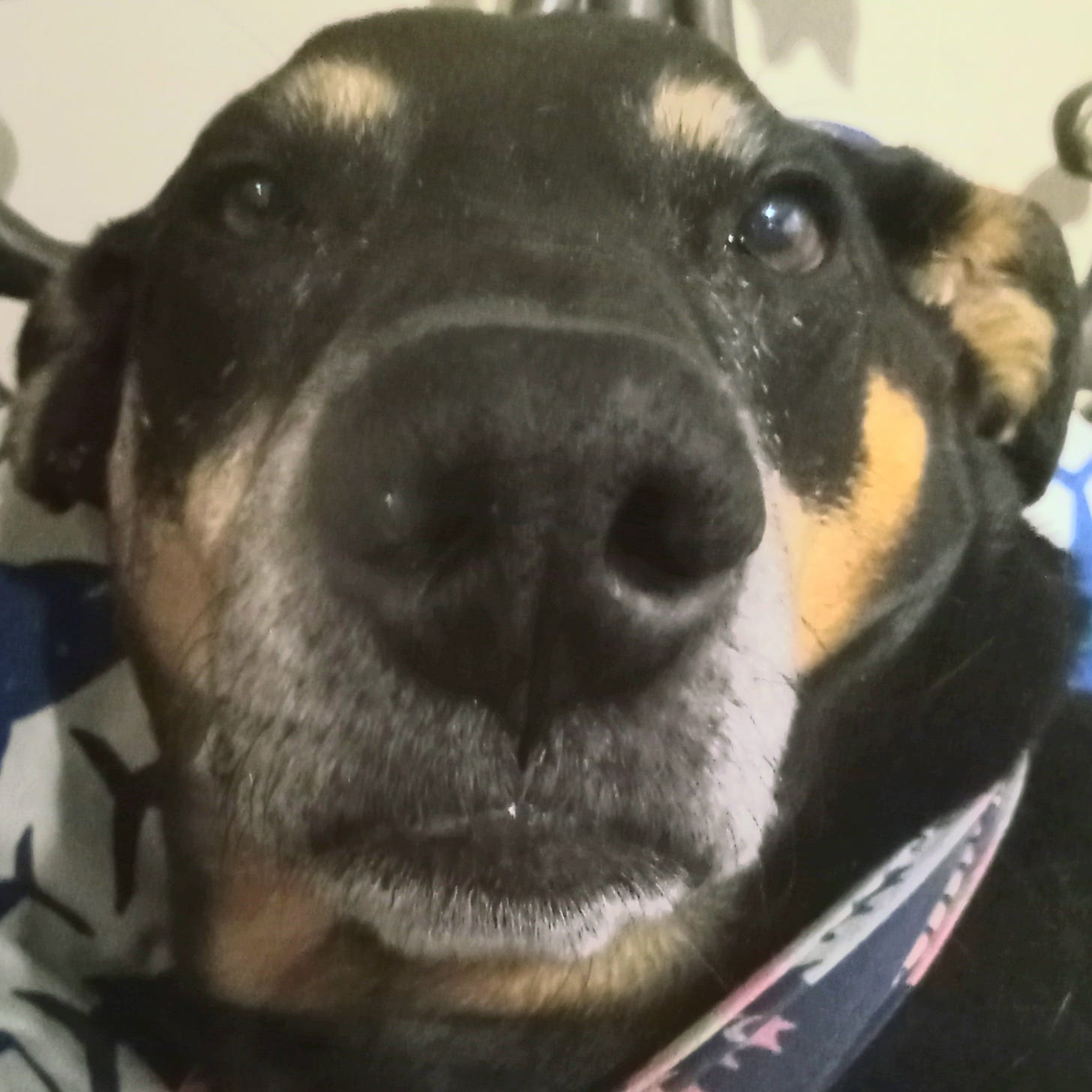The winds of spring are gradually scattering my runs across the warming days
Keeping an older dog happy in rising temperatures is easier when pauses are long enough to include miniature road trips
Rosie turned nine on Sunday. I did my best to rub it in.
Although a temperature relapse into the high teens (American units) is predicted for the early mornings to come, it's been in the mid-sixties in the afternoons this week. That's warm for a dog, and, especially in the aftermath of an unusually chilly winter, it invites normally conditional exercisers onto the paths in their usual semi-conscious clusters. This means one more fixed variable to be concerned about, and dozens more roaming variables to be annoyed about.
Over the past two weeks, I've fallen into a pattern that in hindsight was probably inevitable. I'll do a short run with Rosie—say, 15 to 20 minutes—then hop in the car for a trip of no more than a mile or two for another run of similar duration. The idea is to give Rosie both more rest and more minutes of dedicated exposure to her favorite squirrel-, rabbit-, and prairie dog-coveting locales.
I'm convinced Rosie “regards” the driving portion as part of the workout, since she never stops looking for varmints, especially now that I can keep “her” window wide open. To her, the experience resembles a run-ride-run duathlon.
On Tuesday, we happened to merge onto the Boulder Creek Path when the entire University of Colorado men's distance team was headed eastbound, a little over a mile from where they must have started.
The first thing I noticed in falling in behind them (Rosie's “idea”; she loves chasing, and trotting within, packs of people) was that despite their numbers and youth, these fellas were unusually disciplined about keeping to one side of the path.
The second thing was that despite obviously doing a recovery run, the team was well strung out, with the leaders holding maybe 6:40 pace and the lagging trio (which on any team includes a redhead—why?) maybe 15 seconds a mile slower. I couldn't tell if this stratification was stochastic or intentional, but thankfully my parked car appeared after about a half-mile of this happenstance stalkery, before either Rosie became overheated or I became overworked.
Anyway, since this string of guided activity produces about 30 to 40 minutes of running, short of my daily requirement, I either drop Rosie off at the house and continue on for another half-hour or so around my neighborhood or wait until early evening, which now provides twilight.
(Did you know that if the U.S. sticks with permanent Daylight Savings Time, the sun will never again be directly over the southern horizon at noon anywhere in the country? This is astronomical Orwellianism.)
I usually go with the twilight option, because I don't like being out of running for the day when it's tantalizing outside, yet most people are in for the night. But even if I don't, and already have over an hour in the bag since sunup, I sometimes forget and almost go running for a third time—suggesting a “need” to run harder on my first solo run.
In fact, how many distinct runs does this scheme produce? Can I call two 15-minute easy runs 10 minutes apart a half-hour run? If that's followed by 15 minutes of farting around followed by 30 minutes, the last 20 of them hard, have I done two runs, one easy and one including a tempo component, or can I just call that an hour run with an honest wind-up at the end?
Hm.
Well,
Since I
know of
no auditing
body in jogging,
I don't think it matters.
Running is like writing:
Form and structure
are secondary
to doing
it for
fun.
My life does not feel normal, whatever that was, and barring a near-miracle will never again bear its pre-covid solidity of purpose. And every day, running—whether I perceive it as waves of canine co-engagement or as quanta of introspective footfalls—helps save that life, be it for greater promise or greater peril. Even more than “my” remarkable, equally indispensable dog and the just-as-remarkable and stoic and lovely humans flanking her in my mercurial orbit.




